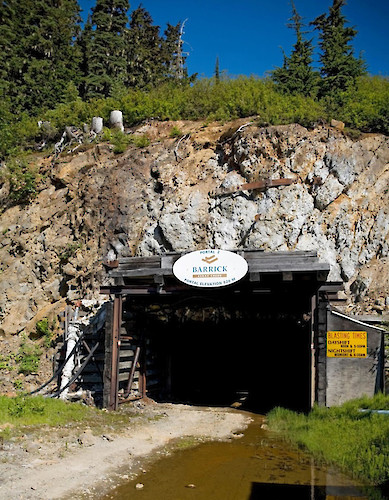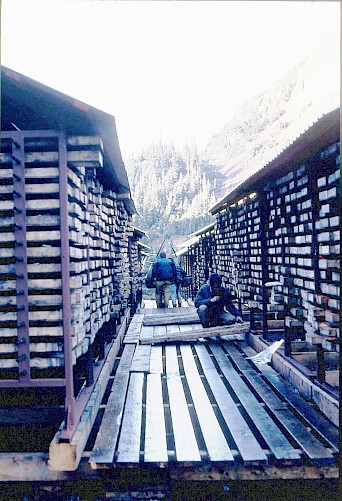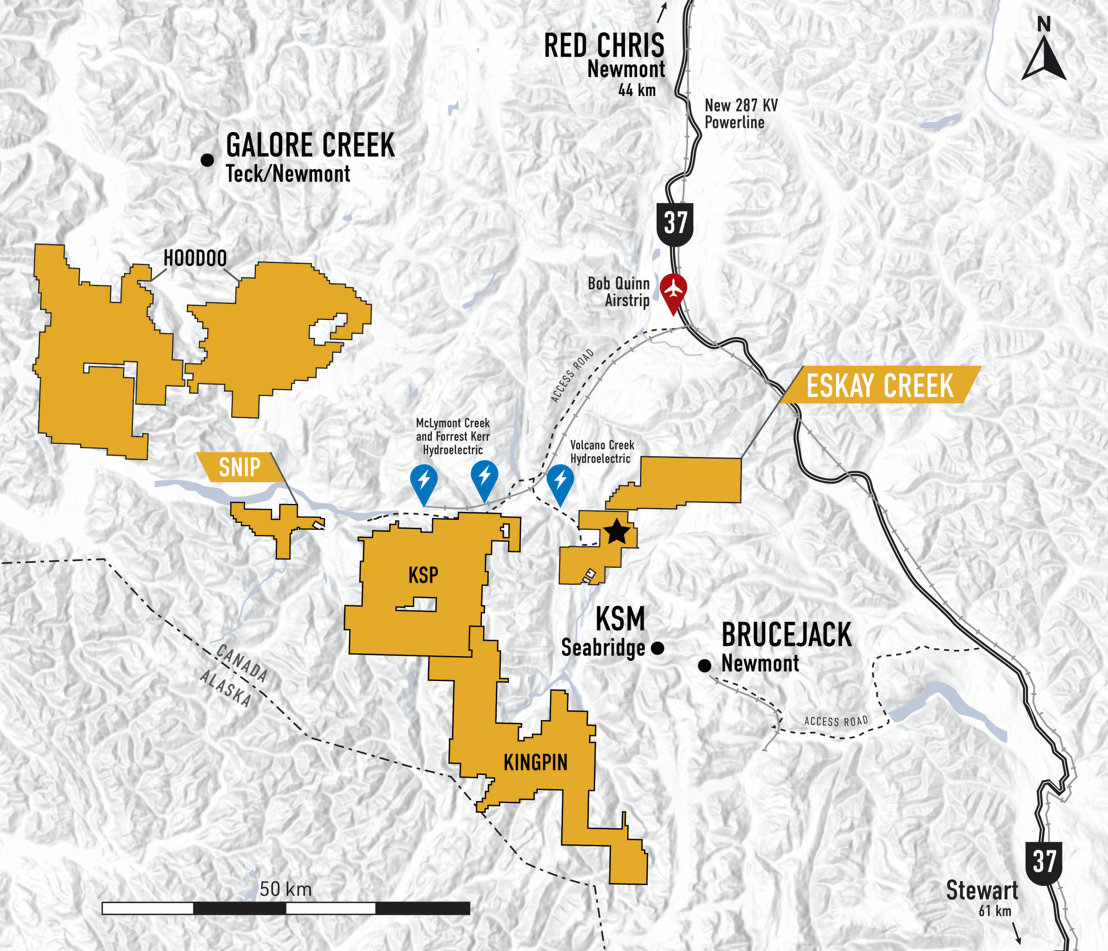Discovered in 1988, the former Eskay Creek Mine produced approximately 3.3 million ounces of gold and 160 million ounces of silver at average grades of 45 g/t gold and 2,224 g/t silver and was once the world’s highest-grade gold mine and fifth-largest silver mine by volume.
A precious and base metal-rich volcanogenic massive sulphide (VMS) deposit, the Eskay Creek mineralization has been the focus of considerable exploration activity dating back to 1932. Exploration drilling in 1988 led to the discovery of the 21A and 21B zones, followed by underground development of the 21B zone starting in 1990 with the official opening of the Eskay Creek Mine in 1994. Over the 14-year life of the mine, approximately 2.2 million tonnes of ore was mined.
The Eskay Creek portal consists of 8 mineral leases, 2 surface leases and several unpatented mining claims totaling 6,151 hectares. Eskay Creek is endowed with excellent infrastructure including all-weather road access and proximity to the new 287-kV Northwest Transmission Line. The Volcano Creek Hydroelectric Power Station is 7 km away from Eskay Creek.
Since Eskay Creek was in production, over $2 billion has been invested in infrastructure in the area.
Skeena completed a Definitive Feasibility Study in November 2023 on Eskay Creek which highlights an after-tax NPV5% of C$2.0B, 43% after-tax IRR and a 1.2-year payback at US$1,800/oz Au and US$23/oz Ag.


